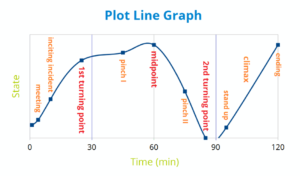 This is the second step in writing a new fiction novel. In the first step, I start out with writing four potential storylines in FreeMind, which is a mind mapping software. You can see that video here.
This is the second step in writing a new fiction novel. In the first step, I start out with writing four potential storylines in FreeMind, which is a mind mapping software. You can see that video here.
Once I finish four potential plotlines, one of them usually pops out and wants to be written. I feel myself getting excited to write it. This process, although it's hard to think of four different storylines, gives me confidence right from the beginning that I am writing the best book for me right now. This whole process fills me with excitement to write.
OPEN SCRIVENER AND BEGIN:
I take my new plotline and open scrivener. I open one document and plan the crime itself. I'm presently writing a police procedural at this time, but even if you are writing a generic mystery, this technique will work. Most great fiction has some level of mystery or suspense in it, so it would even work for generic fiction.
I make a chronological list of the crime as it happens. When it happens, who it happens to, who the first witnesses will be, if any. I also isolate in my mind an actual scene of the crime. I put in all the evidence the cops or detectives will find at the scene. This will begin the investigation. In a mystery or crime novel, this is the inciting incident.
I also add to the list other suspects and what their motivation will be for the crime or mystery. As you begin to add different suspects into the mix, you will most likely have to change your original plotline idea to accommodate these new suspects.
I go through this whole process adding, subtracting and changing up the suspects and plotline in this abbreviated format. It should look like directions from Google maps or a long list of very short paragraphs.
A SECTION CALLED THE ENDING:
I have a section at the end called "How it will end". My books never end the way I indicate in this section. However, by having a solid idea of how I want it to end at this time, it gives me a direction and a destination. Then during the creative process, when I get new and better ideas, I simple go down my list and/or scene outlines (we'll cover these in another installment) and change up the outline. It's easy-peasy.
I do this for the entire storyline. At the end, you will have a good idea what the story is about, but there won't be any nuance, or personality in the story yet, so if it seems dry, don't worry about it. It is very dry at this point. You are knitting together a skeleton and bones are dry. You will breathe live into this as you get to the point of actual writing.
THE BENEFITS OF WRITING THIS OUTLINE:
 Most new writers want to start writing scenes and dialogue. They want to just get on with it. But the dark side of working this way is that when you find out your clues won't work when you need to add a new suspect, you will have written two chapters already. My process will save you from writing for the trashcan.
Most new writers want to start writing scenes and dialogue. They want to just get on with it. But the dark side of working this way is that when you find out your clues won't work when you need to add a new suspect, you will have written two chapters already. My process will save you from writing for the trashcan.
By going through this short one-liner outline in chronological order, anything in the story that won't work, it comes out in this layer of writing. This saves you from throwing away already written work.
There is a video I made for YouTube below. I go over some of these points but others tips and tricks as well. For your convenience, I have time stamps below in case you want to just jump to the section you want to look at:
01:27 - Open Scrivener and open one document
01:45 - Other suspects, their motivation, red herring, etc.
02:15 - How it will End section
03:20 - Determining the framework of the script which will prevent writing for the trash can.
05:30 - Review of the layer elements
05:43 - Sneak peek into the next videos





